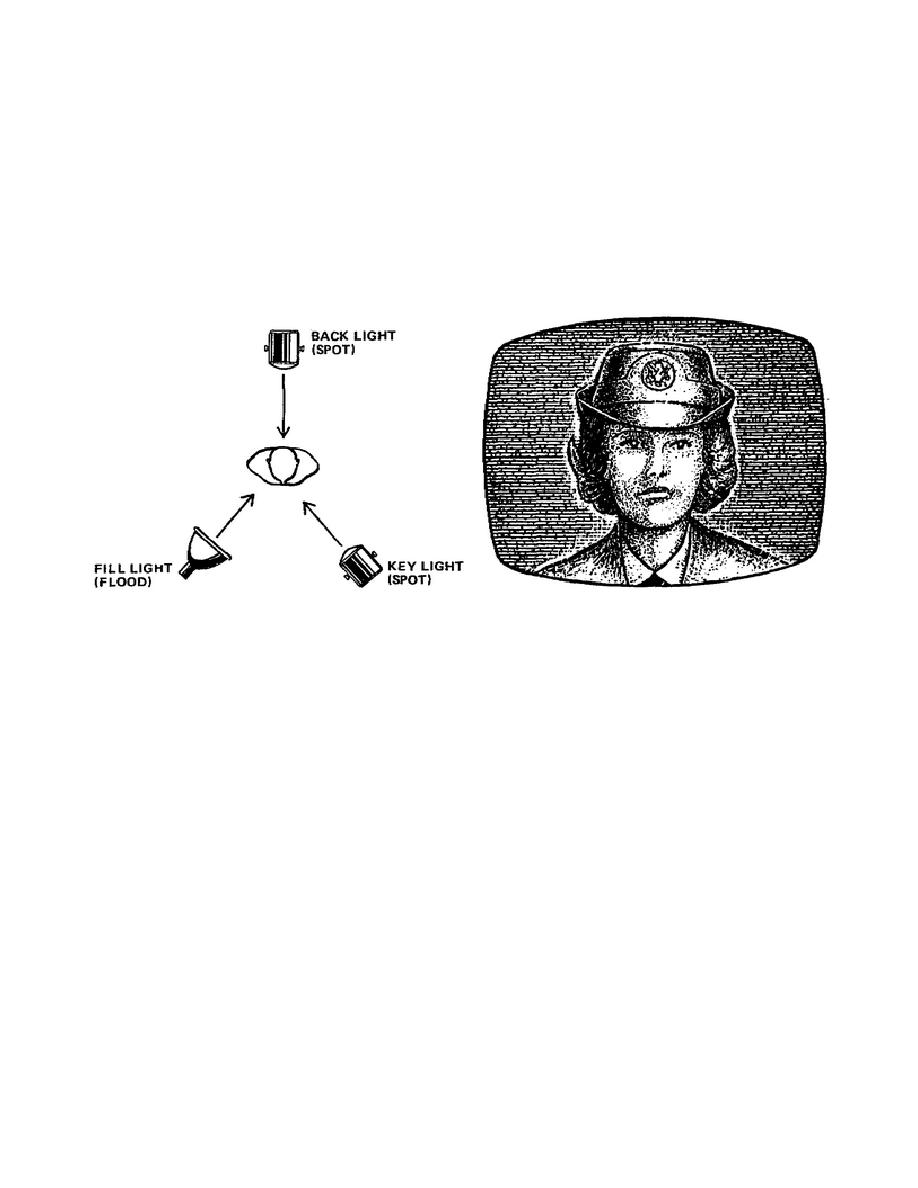
8. It may seem an incredibly difficult task to light for television given all
the considerations.
However, if the lighting technician follows proven
techniques of photographic lighting, the job becomes much easier than
originally thought. Let us take a look at these techniques. Television, like
all the photographic arts, is subject to photographic lighting principles.
Three-point lighting is the most basic of these principles.
a. Three-point lighting, also known as triangle lighting, consists of
three main light sources (as its name suggests). These three light sources are
known as the key light, the back light, and the fill light (fig 1-1). These
lights are positioned in such a manner to most effectively perform their
function.
Figure 1-1.
Three-point lighting
b. When setting up three-point lighting, the primary source of
illumination is the key light (fig 1-2). Its main function is to bring out the
basic shape of an object. In order to do this, the key light must produce some
shadows. A spot light is generally used as the key light. This allows a great
deal of directional control over the light.
5



 Previous Page
Previous Page
